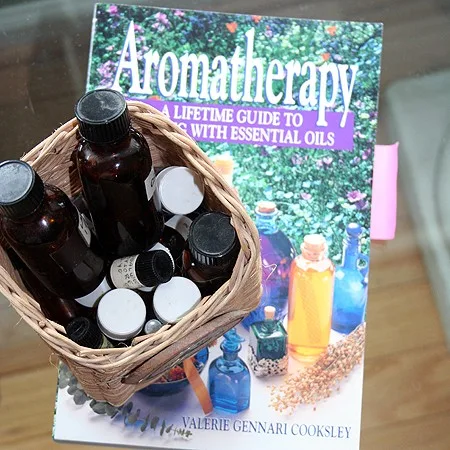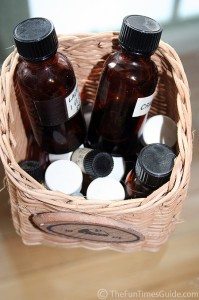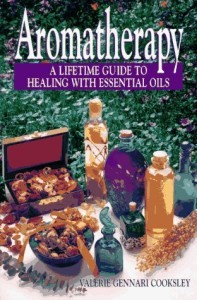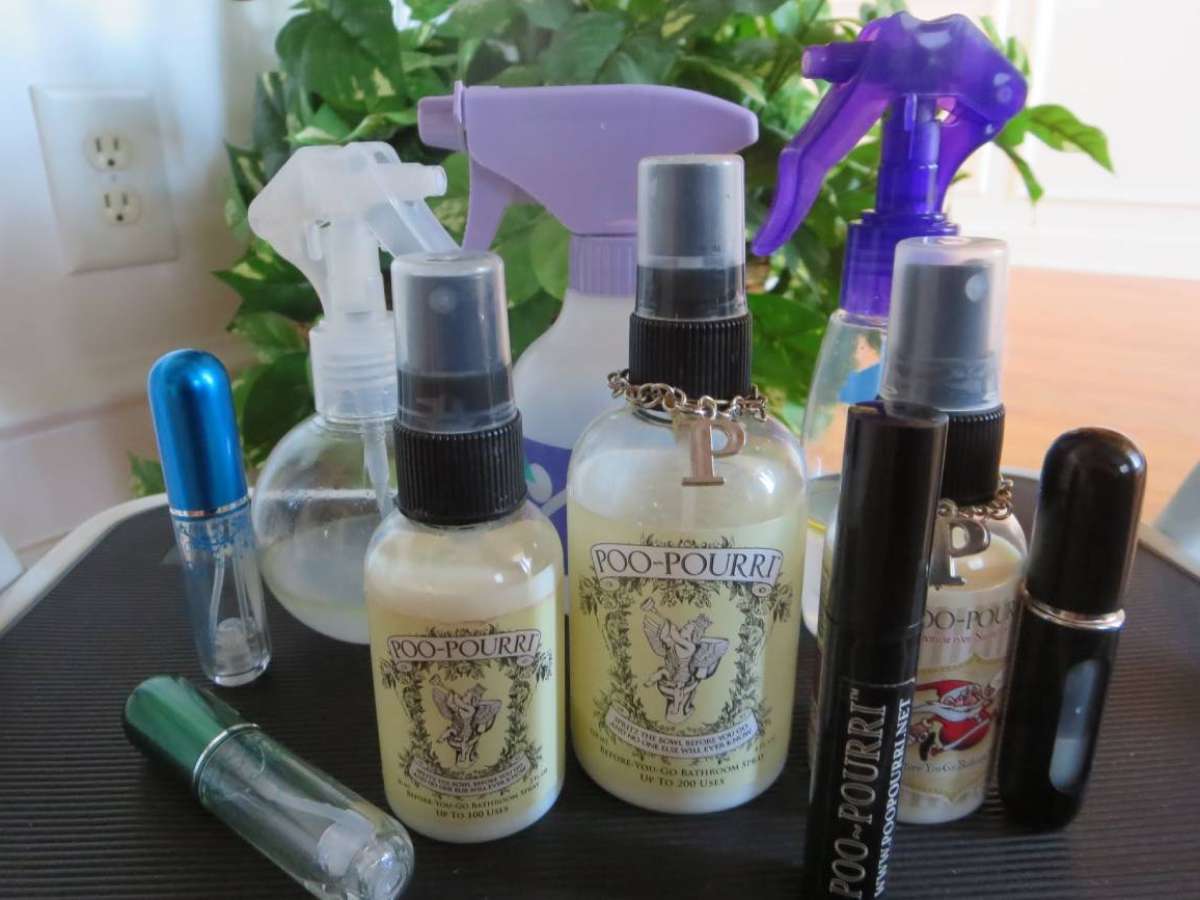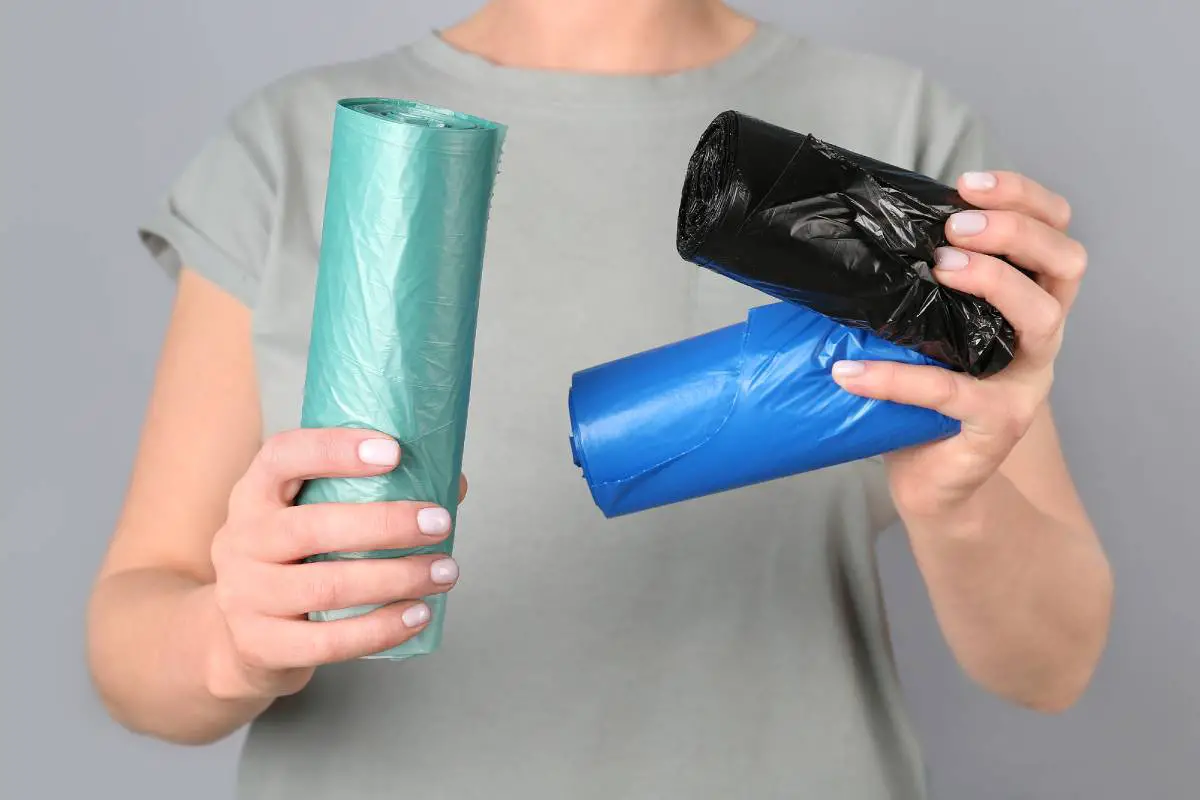Aromatherapy is simply a way of awakening your senses with a particular scent.
- You may choose to fill a room — or an entire house — with the aromatic scent from one or more Essential Oils.
- Or, you might want to massage a combination of Essential Oils onto your skin, or add a few drops to your bath water.
You’ve probably already experienced the benefits of aromatherapy — without even knowing it!
How many times have you walked into the office of your doctor, chiropractor, massage therapist, or day spa and noticed a pleasant-smelling aroma filling the air? THAT was aromatherapy. Offices will generally use a combination of Essential Oils that help to relax and calm people. The right blend of aromatherapy oils can serve to de-stress and motivate people.
Here are the 10 most popular Essential Oils and their properties.
In fact, there’s a “perfect blend” for virtually everything under the sun. Whatever mood you’re hoping to achieve, or whatever mindset you’d like to be in can often be enhanced simply by the use of simple aromatherapy.
I’ve been using Essential Oils and diffusers to fill my home with great scents for years now. It’s just so easy… and so refreshing.
If you haven’t tried it yet, I’d highly recommend it.
Here’s what you need to know…
How To Use Essential Oils For Aromatherapy
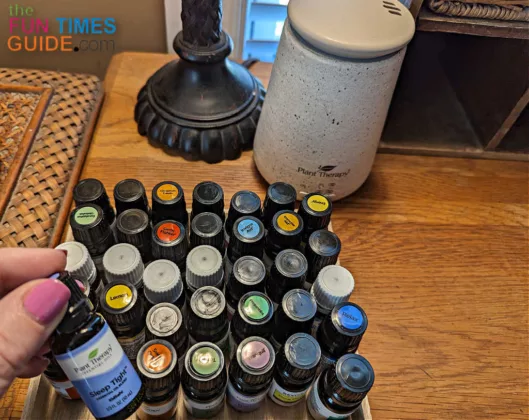
- You can add a few drops of Essential Oil to water in a spray bottle, shake well, and use as an air freshener. (TIP: Do not spray on or near polished surfaces.)
- Have some unscented candles? What about candles that seem to have lost their scent? Just place a drop of Essential Oil on the candle before you light it, and you’ll benefit from the therapeutic properties of that particular scent. (TIP: For candles, it’s best to use Essential Oils with the highest flash points (above 150°F) and strong aromas like: Basil, Cedarwood, Clary Sage, Geranium, Lavender, Lemongrass, Palmarosa, and Patchouli.)
- Some Essential Oils work best when they’re massaged directly onto the skin. For example, you can ease headache pain by rubbing 1 drop of undiluted Lavender Essential Oil onto your temples. (NOTE: Lavender and Tea Tree oils are the only oils that you can apply directly to your skin — undiluted. With other skin-friendly essential oils, you need to use a base oil (like olive oil, safflower oil, or any other vegetable oil) as a carrier — simply add a couple drops of Essential Oil to that before applying to your skin.)
- If you have high blood pressure, you should NOT use the following Essential Oils in your aromatherapy routines: Cypress, Eucalyptus, Ginger, Rose, Rosemary, Sage, and Thyme. (Here’s a list of Essential Oils that should be avoided if you have low blood pressure, epilepsy, you’re pregnant, or you’re breastfeeding.)
- Some Essential Oils have cleansing and odor-repelling properties. For example, you can freshen a pair of smelly shoes by dropping a few drops of Geranium Essential Oil directly into your shoes or place a cotton ball dabbed with a few drops of Lemon Essential Oil and leave in the shoes overnight.
- The scent from Aromatherapy oils is so strong that they can make the best air fresheners in your home. For example, you can place a few drops of your favorite Essential Oil onto a small piece of cloth (or a dryer ball) and toss into the clothes dryer toward the final few minutes of the drying cycle. The heat from the dryer will activate the scent and make your clothes (and the entire room) smell great!
Here are 12 fun ways to use Essential Oils and the number of drops to use each time.
Little-Known Facts About Essential Oils
Most Essential Oils last from 1 to 3 years, when stored in a glass vial or jar (amber or cobalt-colored is best). The exception is any Citrus oil, which only lasts for 6 months to 1 year.
Even though some Essential Oils are good for a few years, once they are mixed with a Carrier Oil, the shelf life of the mixture will equal that of the Carrier Oil itself — approximately 6 months, when refrigerated and tightly capped.
Q: When do you need to use a Carrier Oil? A: When you want to apply an Essential Oil directly on your body, topically. (Only Lavender and Tea Tree can be applied to the skin undiluted.) These are the best Carrier Oils to use.
When you buy a new Essential Oil, write the date on the bottle — so there won’t be any question about when it’s time to remove an oil from your collection.
Store all of your Essential Oils in a cool, dry place, out of direct sunlight. Some people buy a small countertop refrigerator that’s intended for keeping beauty products cool and fresh. You can do this, but it’s not necessary.
Some Essential Oil bottles have an orifice reducer (a flat-top plastic stopper with a hole in the middle) to dispense the drops of oil. This makes it easy to dispense small amounts of the oil at a time. It also reduces the amount of oxygen that enters the bottle, prolonging the life of the oil.
Other Essential Oil bottles have a traditional eyedropper that you pull out of the bottle to dispense the drops of oil. Be sure to use a separate glass eyedropper for each bottle of Essential Oil that you own. This is to prevent cross-contamination and prevent your Essential Oils from becoming diluted (which makes them less effective for Aromatherapy purposes). NOTE: If you won’t be using a particular Essential Oil for awhile, replace the dropper lid with the bottle’s own screw-on lid. This will assure a tighter seal, and prolong the life of your lesser used Essential Oils.
The Best Aromatherapy Book
This is my all-time favorite aromatherapy book: Aromatherapy – A Lifetime Guide To Healing With Essential Oils.
It’s the one I’ve owned for years — and refer to often — because it’s loaded with hundreds of aromatherapy recipes and Essential Oil blends for virtually everything under the sun!
Some of my favorites:
- How to make your own “Bug Off” spray to repel all bugs and insects
- How to make an allergy-relief formula to clear your head & sinuses during allergy season
- How to make soothing aromatic baths by combining a variety of Essential Oils
- How to make an aromatic bath for hypertension & high blood pressure
- How you can rub a few drops of Lavender into your temples for tension headache relief
- How to mix your own blend of Essential Oils to lower your blood pressure
- How to relieve headaches and toothaches with Essential Oils
- How to make an anti-gas lozenge with a drop of peppermint Essential Oil and a sugar cube
- How to make an antiseptic ointment to apply to minor wounds
- How to make a variety of anti-stress deep relaxation blends with Essential Oils
- How to make your own calming, soothing or energizing body lotion using the Essential Oil of your choice
- How to improve your memory and mental clarity
- How to get the most peaceful sleep thanks to calming Essential Oils
The Best Essential Oil Brands
In my many years of using Essential Oils aromatically (in place of candles) and for their effects on the body (helping with “focus,” “energy,” “aches & pains,” and more)… I have learned that there are only a handful of Essential Oil brands that have been proven to be legit.
How do we know that the oils from these companies are 100% pure and natural?
We know because they openly share their GC-MS reports.
The truth is anyone can call their product “100% pure” — because no one is verifying what they say and what they put on their labels. No one!
You need to see a recently-dated GCMS (Gas Chromatography or Mass Spectrometry) test for the specific BATCH NUMBER that’s printed on the bottle. The GCMS report will clearly reveal if there are any additional “chemicals,” “preservatives,” “perfumes,” or “fragrances” added to the Essential Oil.
As a result, the following Essential Oil brands are the only ones I will buy from (in order of price, low to high):
- Revive Essential Oils (they also have a store on Amazon)
- Plant Therapy Essential Oils (they also have a store on Amazon)
- Eden’s Garden Essential Oils (they also have a store on Amazon)
- Doterra Essential Oils
- Young Living Essential Oils
The Essential Oils You Use Around Your Pets Matter!
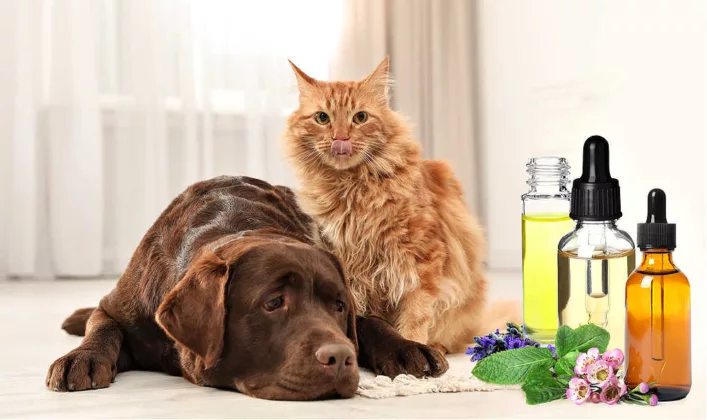
If you have pets, that is yet another reason that you only want to buy 100% pure and natural Essential Oils from legit companies!
I’ve always had dogs. A dog’s sense of smell is 10,000 to 100,000 times more sensitive than ours. Plus, their metabolism is different than ours — so their bodies don’t process the oils in the same timely manner as our own bodies do.
When we diffuse Essential Oils in our homes, the diffuser sends thousands of micro-fine particles of Essential Oil into the air, onto your pet’s fur, and onto the surfaces where your pet roams.
Trust me, you don’t want your pet to be breathing in perfumes, chemicals, and other non-natural ingredients — especially at the micro-fine level that Essential Oils are diffused into the air. Plus, the smaller your pet is, the more dangerous it is for them.
But when you stick to buying from the legit Essential Oil companies that routinely test their oils and make their testing reports public (instead of using oils that are sold at places like Walmart, Target, and other convenience stores), you can trust that your pets will be safe.
You still have to use Essential Oils safely and in moderation around your pets:
- Choose a diffuser that uses water to disperse the Essential Oils into the air. Water-based diffusers dilute the oils enough to be inhaled safely by pets and humans. I use these 5 diffusers regularly in my home with 2 dogs: AromaSoft 100ml diffuser (the first diffuser I ever purchased), InnoGear 100ml diffuser (my second one, based on extremely high reviews), Plant Therapy 100ml diffuser (my first diffuser with an intermittent timer – it’s SO helpful!), and Levoit 500ml humidifier/diffuser (I have one of these in the living room and another one in the bedroom).
- Diffuse Essential Oils on an intermittent schedule, rather than running your diffuser 24/7. Every nose — human or animal — needs regular breaks of fresh air, in order for the oils to serve their purpose and to prevent you from going noseblind (where you can no longer smell the scent because you’re so used to it).
- Always give your pet a way to leave the space when the diffuser is running. Just like humans, every pet is different. One dog may like a certain Essential Oil scent, while another dog in the same room might not. If a scent ever becomes too strong or irritating to your pet, they need to be able to leave the room on their own.
NOTE: Online there are lists upon lists of Essential Oils that are safe (and NOT safe) to diffuse around pets. Specifically, there are many different lists floating around that mention dog-safe Essential Oils and Essential Oils that are safe to use around cats. But the truth of the matter is… you don’t need a list! If the Essential Oil company makes its oils using the safest methods available and they provide their GCMS reports to the public (so we can see that no “extra fillers” appear in their oils), then you can be confident that their oils are safe to use — in moderation — around your pets. I happen to follow several veterinarians who use Essential Oils daily on and around the animals in their vet clinics, as well as on and around the animals in their own homes. If veterinarians trust the use of 100% pure and natural Essential Oils around their animals, then I do too! (The brands I’ve listed above are the ones my veterinarian friends trust.)
Essential Oil Diffuser Jewelry
And finally, just because it’s a relatively new discovery for me that I wish I’d known about when I was getting started with Essential Oil scents and Aromatherapy…
There are some really fun ways to diffuse scents with jewelry these days!
I have 2 Essential Oil diffuser bracelets and 2 Essential Oil diffuser necklaces. I absolutely LOVE these items, and I wear at least one of them every single day:
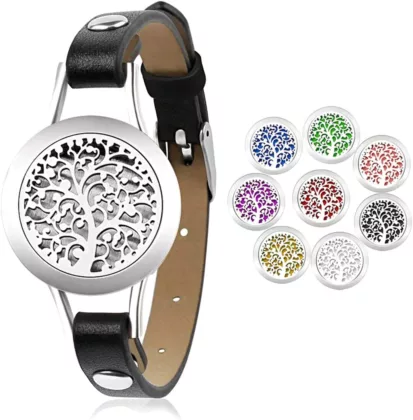
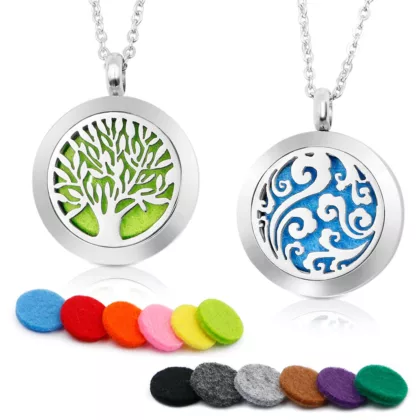
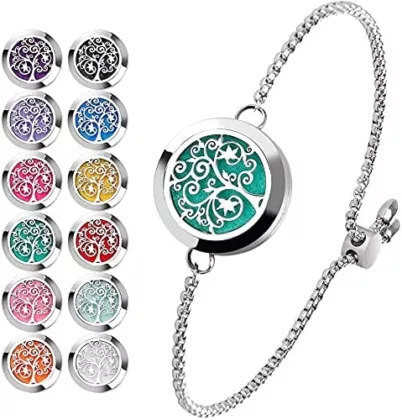
Here’s why I like my jewelry diffusers:
- Jewelry diffusers provide a very subtle release of Aromatherapy all throughout your day.
- The jewelry diffusers I’ve purchased (pictured above) are super affordable!
- Each piece of diffuser jewelry comes with its own perfectly-sized sturdy felt discs. Simply add a drop or two of any Essential Oil to the disc before wearing the jewelry.
- The scent from just 1 or 2 drops of Essential Oil lasts about 1 week in these jewelry pieces — no joke.
- It’s a great way to enjoy different Essential Oils around your pets — without filling the entire room with a particular scent. For example… if you happen to learn that your pet doesn’t like the scent from a certain oil (or blend of oils), then just apply that oil (or blend) to your diffuser jewelry instead of diffusing it throughout the whole house.
- Diffuser jewelry makes it easy to enjoy the benefits of Aromatherapy when you’re away from home (like traveling or at work). In effect, the Essential Oils that you choose to wear in your jewelry become your “signature scent” or your “personal cologne” — and you can change it up at any time!
I like to help people find unique ways to do things that will save time & money — so I write about “outside the box” Household Tips and Life Hacks that most wouldn’t think of. I’m super-organized. And I LOVE to clean! I even enjoy doing laundry (but not ironing). I’m also a lifelong dog owner — so I often share my favorite tips for living with dogs inside your home (like smart home design choices and dog-friendly cleaning & decorating ideas). Career-wise, I’ve been sharing my best ideas with others by blogging full-time since 1998 (the same year that Google started… and before the days of Facebook and YouTube). Prior to that, I worked in Higher Ed over 10 years before switching gears to pursue activities that I’m truly passionate about instead. For example, I’ve worked at a vet, in a photo lab, and at a zoo — to name a few. I enjoy the outdoors via bicycle, motorcycle, Jeep, or RV. When I’m not cleaning, organizing, decorating, or fixing something… you’ll find me at the corner of Good News & Fun Times as publisher of The Fun Times Guide (32 fun & helpful websites). To date, I’ve personally written over 200 articles about cleaning, organization, DIY repairs, and household hacks on this site! A few have over 2M shares; many others have over 100K shares.

